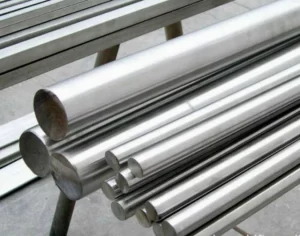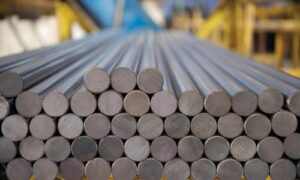Introduction
In the realm of materials engineering, the choice of alloy can significantly impact the success and longevity of a project. Among the myriad options available, 316 stainless steel round bars have gained a prominent position. Renowned for their exceptional properties, these round bars find applications across diverse industries. In this comprehensive exploration, we will delve into the myriad applications that benefit from the unique characteristics of 316 stainless steel round bars.
- Introduction
- Understanding 316 Stainless Steel
- Applications in the Marine Industry
- Medical Devices and Surgical Instruments
- Chemical and Pharmaceutical Processing
- Food and Beverage Industry
- Aerospace Engineering
- Custom Fabrication and Architectural Design
- FAQ
Understanding 316 Stainless Steel
Before we explore its applications, let’s grasp the fundamental characteristics of 316 stainless steel round bars.
Chemical Composition
316 stainless steel comprises key elements:
- Chromium (Cr): 16-18%, forms a protective oxide layer for corrosion resistance.
- Nickel (Ni): 10-14%, enhances toughness and corrosion resistance.
- Molybdenum (Mo): 2-3%, provides resistance to pitting and crevice corrosion.
- Iron (Fe): The base element of stainless steel.
Mechanical Properties
- Tensile Strength: 515-620 MPa, suitable for high-stress applications.
- Yield Strength: Approximately 205 MPa, withstands significant stress without deformation.
- Elongation: Typically exceeds 40%, allowing substantial deformation.
- Hardness: Around 95 HRB when annealed.
Applications in the Marine Industry
Corrosion Resistance
316 stainless steel’s remarkable corrosion resistance makes it a staple in the marine industry. It thrives in saltwater environments, making it ideal for boat fittings, shipbuilding, and offshore structures.
Durability
Exposed to the harsh conditions of the sea, 316 stainless steel resists rust and corrosion, ensuring long-term performance and safety.
Medical Devices and Surgical Instruments
Biocompatibility
316 stainless steel’s biocompatibility and resistance to body fluids make it an excellent choice for manufacturing medical devices and surgical instruments. It minimizes the risk of adverse reactions within the human body.
Sterilization
Its ability to withstand high-temperature sterilization processes ensures the safety and integrity of medical equipment.
Chemical and Pharmaceutical Processing
Corrosion Resistance to Chemicals
In chemical and pharmaceutical processing, where exposure to corrosive substances is common, 316 stainless steel excels. It resists acids, bases, and various chemicals, ensuring the integrity of processing equipment.
Hygiene and Cleanability
The smooth, non-porous surface of 316 stainless steel prevents contamination and allows for easy cleaning, crucial in these industries.
Food and Beverage Industry
Food Safety
316 stainless steel’s non-reactive nature makes it suitable for food processing equipment. It doesn’t impart any taste or odor to the products, ensuring food safety and quality.
Hygienic Design
The material’s cleanability, along with its resistance to corrosion, meets the stringent hygiene standards of the food and beverage industry.
Aerospace Engineering
Strength-to-Weight Ratio
In aerospace engineering, where weight is a critical factor, 316 stainless steel’s impressive strength-to-weight ratio is advantageous in components like aircraft frames and fittings.
Resistance to High Temperatures
It maintains its mechanical properties and corrosion resistance at elevated temperatures, meeting the demands of aerospace applications.
Custom Fabrication and Architectural Design
Versatility in Design
Architects and designers value 316 stainless steel for its versatility in custom fabrication. It can be molded into various shapes and sizes to create intricate architectural elements.
Aesthetic Appeal
Its polished finish and modern aesthetic make it a popular choice for contemporary architectural designs.
FAQ
1. Is 316 stainless steel magnetic?
No, 316 stainless steel is typically non-magnetic as it belongs to the austenitic stainless steel family.
2. Can 316 stainless steel be welded?
Yes, it is weldable, but proper techniques and filler materials are crucial to maintain its corrosion resistance. Post-weld heat treatment may be necessary in some cases.
3. Is 316 stainless steel suitable for high-temperature applications?
Yes, 316 stainless steel can withstand high temperatures without significant loss of mechanical properties, making it suitable for various temperature conditions.
4. What makes 316 stainless steel different from 304 stainless steel?
316 stainless steel contains molybdenum, enhancing its resistance to pitting and crevice corrosion, making it more suitable for harsh environments, unlike 304 stainless steel.
In conclusion, the versatility and exceptional properties of 316 stainless steel round bars have made them indispensable across a spectrum of industries. From the demanding marine environment to the delicate realm of medical devices, their corrosion resistance, durability, and cleanability have earned them a well-deserved reputation. As technology advances and design aesthetics evolve, we can expect to see even more innovative applications for this remarkable material.


